骨格情報を用いて生成される印刷媒体のためのかな書体の開発
要旨
近年、コンピュータのハードウェアとソフトウェア、両面の品質向上に伴い、コンピュータを用いた組版環境であるDTP(デスクトップ・パブリッシング)は日本の文字組版の現場に急速に浸透した。
印刷史をふりかえると、印刷技術の変化が、常に新しい文字表現を生んできたことがわかる。活版印刷、写真植字の時代を経てDTP が普及した現在、コンピュータならではの新しい文字表現が生まれる土壌は整ったといえる。
かつて、日本の筆文字は、なだらかな大小の繰り返しや、左右の斜線による連綿など、さまざまな表現能力を持っていた。しかし、活版印刷が導入されて以来、主に経済的な理由によって、印刷媒体の文字においては、そうした文字表現は失われた。
本研究では、日本の手書き文字が本来持っている表現の要素を、コンピュータを利用することで印刷媒体の文字にも導入できないかと考えた。具体的には、文字の骨格情報と、仮想的な筆の上下動の情報を利用することで、文字を組む(並べて文章にする)と同時に、動的にタイプフェイス(印字面)が生成される新しいかな書体を制作する。この方法により、前後関係に依存して形が変化し、文章中の位置によって固有のかたちを持つかな文字の表現が可能となる。
慶應義塾大学大学院 政策・メディア研究科 2003年度 修士論文
山本晃士ロバート Kohji Robert Yamamoto
Development of KANA typeface generated using stroke data for print media
Abstract of Master’s Thesis Academic
Today, Improvement in quality of both computer software and hardware made DTP (desktop publishing) as computer-aided printing technology popular in printing industry in Japan.
Printing history shows that, changes in the printing technology give rise to a new typography. After the time of letterpress or phototypesetting, in these years DTP spreads throughout printing industry, it have the ability to create new typographic expression. The handwriting character written by the Japanese brush has various expressions. For example, a repetition of gently-sloping size, the natural-connection by the slash on either side, etc. However, when letterpress printing was introduced in Japan, such character expression was lost in the print media for mainly the economical reason.
In this study, I aim to introduce the expression element which handwriting character originally has into the typeface of the print media by using computer. In particular, the new KANA style of handwriting by which a typeface generated dinamically at the same time it puts a character in order with the stroke data on a character and the up-and-down motion data of an virtual brush. By this method, a form changes depending on an order relation and expression of the kana character which has a peculiar form with the position in a text is attained.
Keio University Graduate School of Media and Governance
Master’s Thesis Academic 2003
Kohji Robert Yamamoto
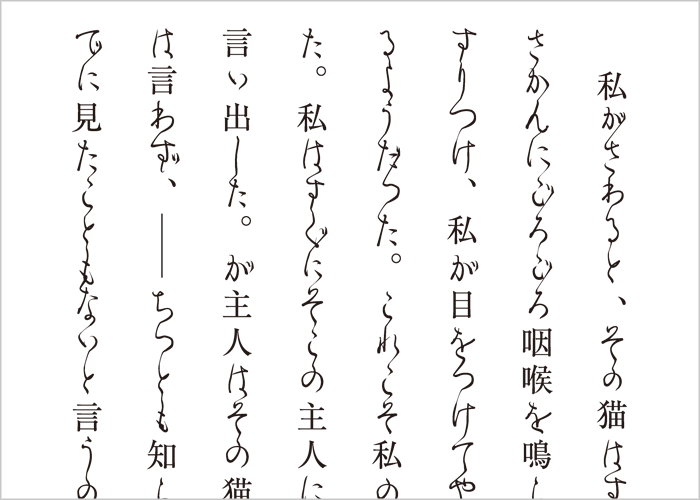
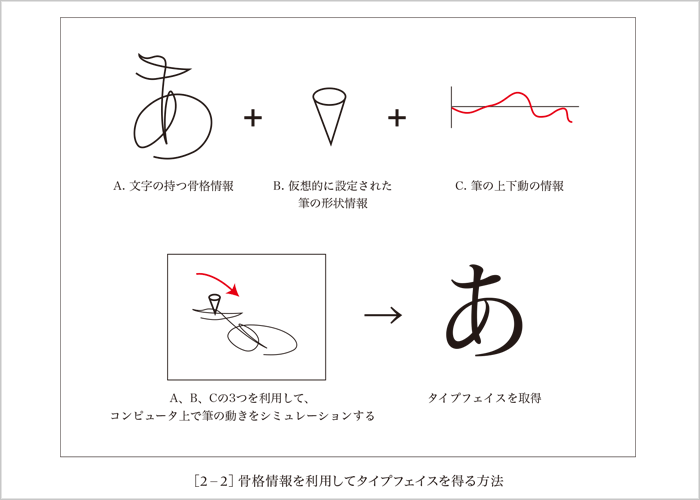
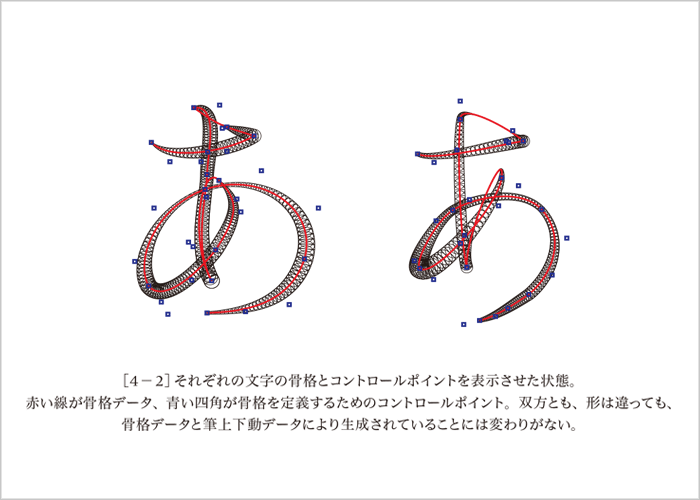
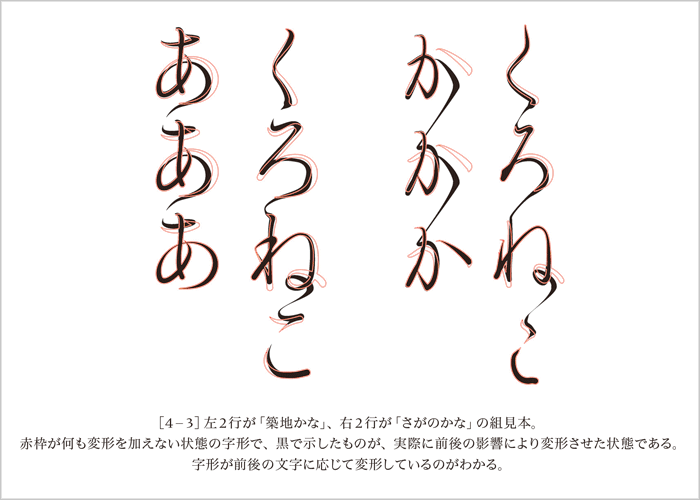
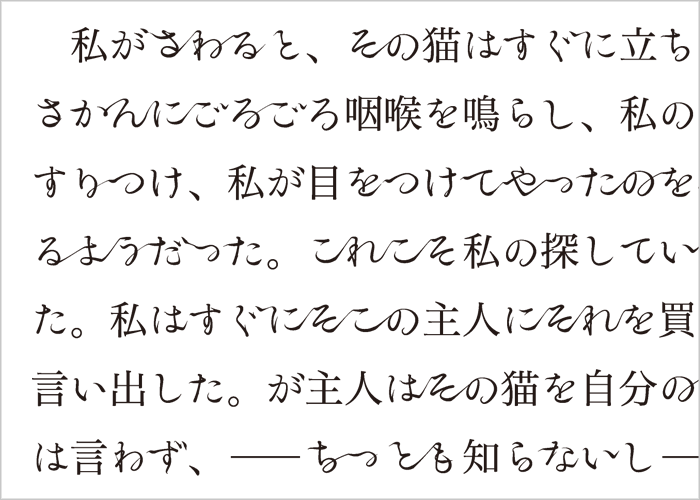
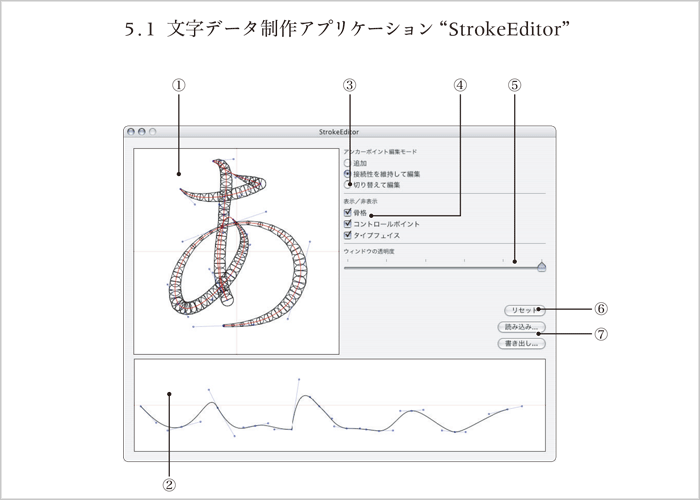
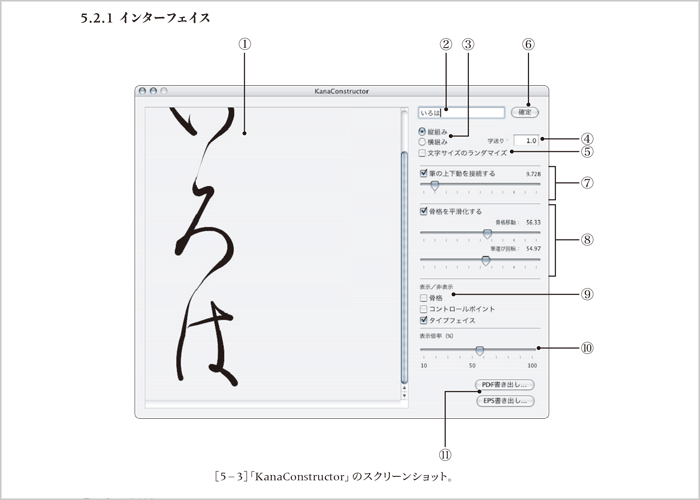
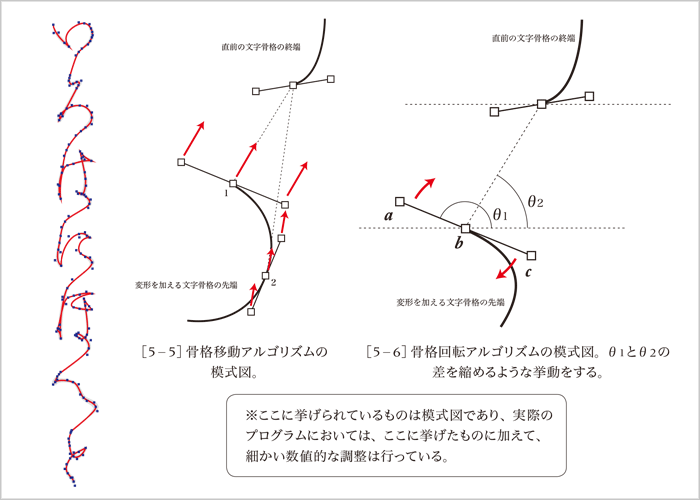 © Kohji Robert Yamamoto
© Kohji Robert Yamamoto